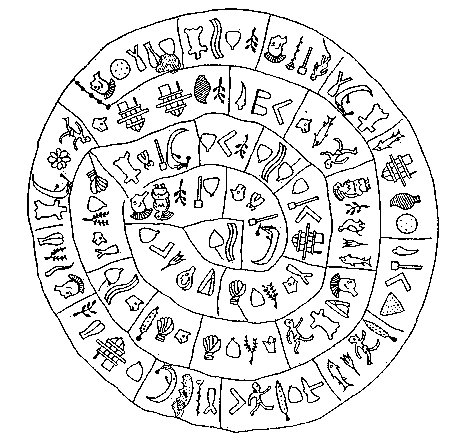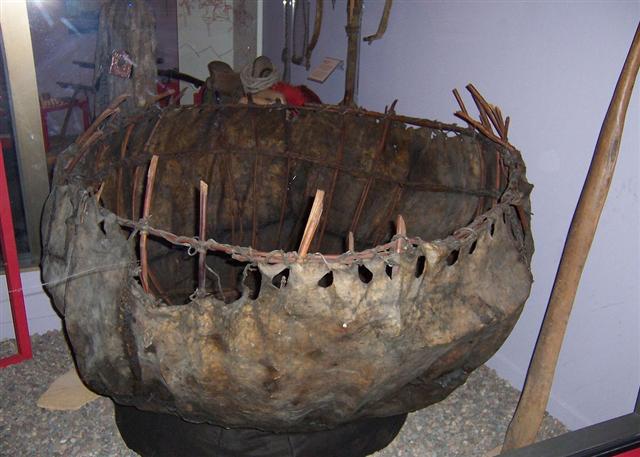|
584
45 If the rongorongo texts basically were designed in order to illustrate the Gregorian calendar, then the flow of glyphs should be in parallel with the flow of heliacal right ascension days and the corresponding stars. This we have already found to be a plausible proposition. But the stars high up in the polar regions ought then to be located not at the glyphs representing their heliacal dates but instead at the dates when they where were bound to culminate in the night (at 21h).
This implies we should presumably count 8 glyphs backwards from Ab1-3 in order to find the culmination of the Lizard. And 673 (Ab1-3) - 8 = 665 (Aa8-80):
The eye-catching design of Aa8-80 could illustrate the special polar region at the top, to be reached only by boat. This seems to be atated e.g. in the center of the top side of the Phaistos disc:
... The coracle is the same old harvest basket in which nearly every antique Sun-god makes his New Year voyage; and the virgin princess, his mother, is always waiting to greet him on the bank ...
Which we then ought to compare with the C text: Cb1-9 (401) - 8 = 393 (Cb1-1)
The current star at the north pole, Polaris (´*26), was followed by the day when Lacerta culminated (at 21h) - which day (remarkably) coincided with the First Point of Aries (Sheratan, *27) rising together with the Sun at 0h in Roman times.
|
||||||||||||||||||||||||||||||||||||||||||||||||||||||||||||||||||||||||||||||||||||||||||||||||||||||||||||||||||||||||||||||||||||||||||||||||||||||||||||||||||||||||

















